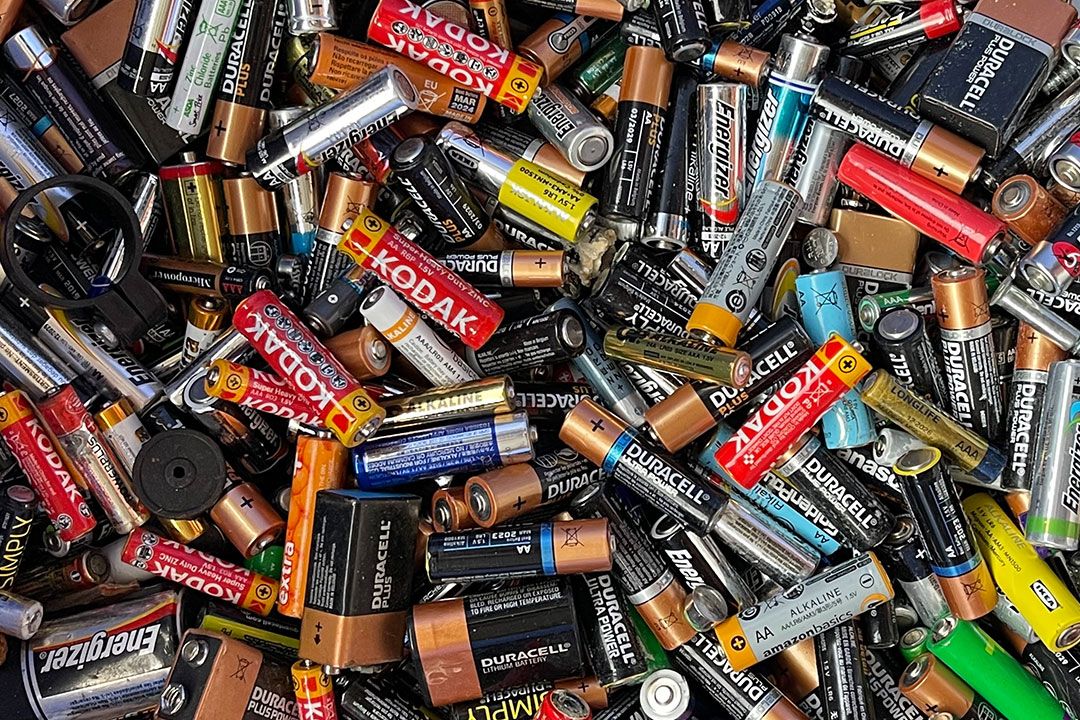Is the future of wearables batteryless?


Wearables are huge at the moment! As of today, the IoT wearable electronics market is worth a staggering $40 million globally! And it is all set to grow at an equally staggering 13.8% all the way through to 2028. Wearables it would seem are really hot then - Well they are, but they are also part of a larger trend - consumer spending on personal electronics has gone through the roof over the past few years.
Gone are the days when splurging on tech goods was a niche pursuit reserved for the unabashedly nerdy. The sheer scope of what today’s devices allow you to do is possibly a major driving factor behind the astronomical growth in this space.
Today, your smartphone is essentially a conduit between you and the world at large - allowing you to have global reach at the touch of a button and helping you get just about anything done. Be it work, entertainment or even fitness - our trusty digital tools have simply taken over our lives to an extent that would have seemed improbable even 10 years ago.
Wearables are a huge part of this larger trend - The idea, in a nutshell, is this - the consumer wants more convenient and handy ways to interact with the internet. You see, the internet has grown to be this behemoth that simply encompasses, within its ambit, so much opportunity, resourcefulness and makes for possibilities that are yet to be conceived - What we’re trying to say is this - imagine if you had to explain what the internet was to someone who’s never heard of it.
Where would you even start?
Yes you can tell them that it is essentially a bunch of computers from around the world connected to each other. That would be true. That is, in essence, what the internet is. However, that wouldn’t really tell them anything about just how many possibilities the internet has made available to us in our day to day lives.
With today’s IoT technology, the internet just got a lot more robust and flexible. Today, thanks to ridiculous advances in semiconductor technology, we are able to tap into the power of the internet in previously inconceivable ways.
Why Wearables
Today’s user is more than happy to have more than one device capable of internet connectivity on their person at any given point in time. Wearables allow the user to wear internet access on their person - quite literally!
The idea is quite simply really - today we don’t only use the internet through traditional computing device like phones and computers - Thanks to self-powered sensors, blazing fast mobile data and advances in technologies such as artificial intelligence (AI) and machine learning (ML) has allowed us to create nodes that usually have incredibly focused functionality and are often smaller than a postage stamp. With these nanocomputers, if you will, we have been able to distil very specific internet-related functionality into various devices, of various form, size and function,
The recent explosion in consumer interest around this space is quite spectacular - It is forecasted that consumer spending on IoT wearables will double within this year! Today it’s smartwatches and fitness trackers. But with products like google glass already having made it to market, it wouldn’t be a long stretch to expect that IoT wearables of all types will be entering the market in the near future.
The idea is to bring devices that are so portable that the user literally wears them on their person. Let’s take the case of the apple watch - this product boasts of gargantuan sales numbers at least in part, thanks to offering a user a genuinely exciting proposition.

Looking past batteries as a power solution for wearable devices
IoT wearables have been stymied in realising their massive market potential in large part due to the battery problem. See, the whole idea with a portable device is that it’s - well, portable. Quite understandably, the customer who is asked to fork out a few hundred bucks for these things is very annoyed when he finds out that his prized wearable can’t hold its charge for more than a few tense hours. However, the company is in a quandary because if they try to fit a big battery into a little wearable device like a wristwatch or an armband, they simply won’t be as miniaturised anymore.
Admirably though, despite the seeming catch 22-ness of the situation, the market does have its share of highly functional and reliable wearable devices that boast of impressive battery life. However, even these devices come with the caveat that the batteries will need replacing. As we move towards devices that will get smaller in order to serve more specialised functions we have had to look past batteries for a power solution.
It’s not just that they run out of juice and then need to be replaced. They make an enormous ecological imprint. In addition to being severely pernicious to natural ecosystems, mining for rare minerals like Cobalt, which go into the making of modern batteries, have a shocking humanitarian cost.
This is where self-powered sensors come in. They are exactly what they sound like - these are wireless MCUs, or in simpler terms, computer chips, that are capable of autonomously generating enough electricity for their own functioning.
How do they do this?
Although they sound futuristic, the working of self-powered sensors is based on a very simple schematic - They use a technology called energy harvesting in order to draw energy from their surroundings and convert it into usable packets of electrical energy.
Depending on the source of energy, there are various modalities of energy harvesting, RF energy harvesting, Piezoelectric energy harvesting, solar energy harvesting etc, just to name a few. Self-powered sensors usually have a capacitor in them that allows them to send and receive signals without relying on a battery for power.
If this sounds like it’s right out of a sci-fi flick, well then, you are not alone in thinking that. It is pretty cool technology alright! But the catch is that energy harvesting technology, as it stands today, can only deal with power demands in the range of milliwatts.
But luckily for us, we have chips in the market today that are capable of crunching some serious tasks with just these milliwatts.
What does this mean for wearables?
For wearables, self-powered sensors spell major disruption. As such, there is a lot of innovation coming through the pipeline that points to some seriously underestimated level of untapped technological potential in the wearables space.
Although the explosion in consumer interest at the moment is huge, it might well be the case that we’re seeing right now is just the tip of the proverbial iceberg - in the near future, we might see wearable technology grow so exponentially that they essentially would be to wearables of today what phones of today are to GSM phones circa 2006. Moore’s law would suggest that it won’t take 15 years either.
Researchers around the world have been going hard at this problem for the past few years. A ton of money has been invested in funding research on self-powered wearable technology. The reasons are fairly obvious - batteryless has got to be the future if we’re going to design solutions that are compelling enough to convince manufacturers and business owners into making an initial investment.
More importantly, however, we are starting to see pretty ominous signs that we need to get our act together as a species. With a steeply climbing global population, there is a pressing need for sustainable energy solutions that are not toxic to our surroundings. The human pursuit for more and more resources including energy has left our ecosystem in tatters.
This is another major reason why energy harvesting is drawing the kind of global attention that it is at the moment - the world is more concerned than ever with matters of sustainability and no one is more keenly aware of it than those at the cutting edge of IoT technology. It is very clear by now that IoT technology is going to feature in our near future in a massive way.
The only question we have in front of us is this - are we going to make sure that this IoT revolution that is coming is going to be self-powered?
The future of wearables is batteryless
There is an intense and hostile competition among the big players in the wearable tech space. The margins are slim and the consumer is more discerning than ever. With the prevailing atmosphere within the wearable space being so hyper-competitive, something’s surely got to give.
As the big tech giants produce one super-specced variant after another, trying to prey on each others’ market shares, we will see wearable devices hit a ceiling in terms of their size and capability. As far as the data side of things is concerned, there’s pretty much nothing to worry about - the products of today do not nearly take enough advantage of the data-processing might that we command today.
So, if the wearable device has to deliver on its own untapped potential, it needs to get smaller, leaner and self-powered.
This is by no means a rose-tinted scenario - the puzzle pieces have largely already assembled themselves - energy harvesting technology is exploding at the moment!. The rate at which new innovations are announcing themselves in the energy harvesting market at the moment is quite unreal.
We already have wireless MCUs in the market that runs on ambient RF energy harvesting - this means that they won’t need any batteries to function whatsoever. These nano-sized IoT chips will have miniature power plants inside them that gather electricity from the electromagnetic waves in the vicinity. Isn’t that super cool?
After all, self-powered sensors are able to eliminate the problem of waste battery disposal in one fell swoop.

Body-powered wearables
There are a number of different energy harvesting technologies that a manufacturer can choose from today - leading the pack are technologies like RF energy harvesting and piezoelectric energy harvesting.
However, there’s a lot of new research being done on working out how wearables can be powered using the wearer’s bioenergy. There’s a significant amount of interest in energy harvesting from the human body. The big kahunas of the IoT world are keen on trying to come up with functional wearables that will be increasingly capable, but thanks to energy harvesting, also incredibly portable. For instance, let’s take a look at this experiment conducted at an institution based in Southern California - they managed to build a device that can harness small amounts of electricity from the wearer’s sweat.
Wearables will likely become as indispensable as today’s phones in a few years. The incredible array of functions that they will be able to perform will make them indispensable parts of our everyday lives.












